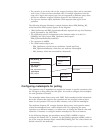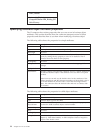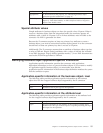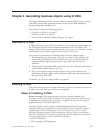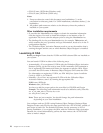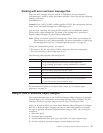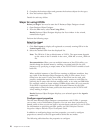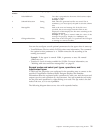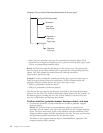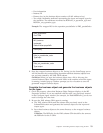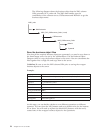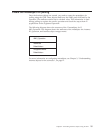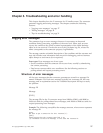
Row
number
Property name Property type Description
1 DefaultBOPrefix String Text that is prepended to the name of the business object
to make it unique.
Example: i2_BO
2 SchemaFileLocation String Path where the generated.xsd files are stored. This is
mandatory; you must specify the path to store the schema
files.
3 MessageFile String Path to the error and message file. If the file is not
specified, the error messages from the ODA are not
displayed. i2 ODA displays the file name according to the
naming convention.
Example: If the agent is named i2ODA, the value of the
message file property displays as i2ODAAgent.txt.
4 CISAgentHostName String Host name of the CIS agent, it is specified if the CIS agent
is running on a remote machine.
You can also configure several optional parameters for the agent when it starts up.
v TraceFileName--File into which i2 ODA writes trace information. The command
line option for this parameter is -t. i2ODA names the file according to the
naming convention.
Example: If the agent is named i2ODA, it generates a trace file named
i2ODAtrace.txt.
v TraceLevel--Level of tracing enabled for i2 ODA. For more information, see
“Working with error and trace message files” on page 19.
Expand nodes and select port types, operations, and
input/output types
i2 ODA uses the properties you configured in the preceding step to connect to the
specified i2 application. Business Object Designer displays the metadata
information about the registered ports, operations for each port, and the input and
output types for each operation as a tree structure. You can expand the tree nodes
for the ports and operations by right-clicking on a node. The type node is the leaf
node of the tree, so it is not expandable.
The following diagram shows a tree view with expanded nodes.
Chapter 4. Generating business objects using i2 ODA 21



